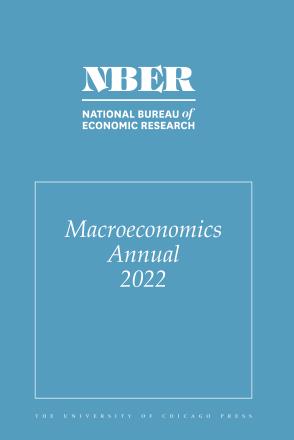NBER Macroeconomics Annual 2022, volume 37

The NBER Macroeconomics Annual 2022 brings together leading scholars to discuss five research papers on central issues in contemporary macroeconomics. First, Andrea Eisfeldt, Antonio Falato, and Mindy Xiaolan document the rise of a new class of worker that receives part of its labor income as equity-based compensation, its role in the recent decline in the labor share of income, and implications for the returns to skilled labor and the implied capital-skill complementarity. Next, Michael Bauer and Eric Swanson focus on monetary policy shocks and argue the correlation between estimated monetary surprises and previously available information can be explained by uncertainty about the parameters of the monetary policy rule. Using new data and methods they find effects of monetary policy on macroeconomic variables that are much larger than previously estimated. Job Boerma and Loukas Karabarbounis provide a framework for quantitatively exploring the gap in wealth between White and Black Americans over the past 150 years and examine the effectiveness of reparations as a tool for closing this gap. Guido Menzio considers workers who do not have rational expectations, and whose “stubborn” beliefs change the response of wages to technology shocks, resulting in sticky wages. He finds that the larger the fraction of workers with stubborn beliefs, the more volatile unemployment is. Finally, Rishabh Aggarwal, Adrien Auclert, Matthew Rognlie, and Ludwig Straub investigate the growth—particularly in the United States—of private savings, current account deficits, and fiscal deficits after 2020. They argue that fiscal deficits lead to large and persistent increases in private savings and current account deficits.


